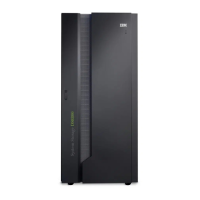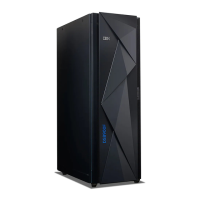during an outage. Although failover transmits no data, it changes the status of a
device, and the status of the secondary volume changes to a suspended primary
volume. The device that initiates the failback command determines the direction of
the transmitted data.
Recovery procedures that include failover and failback modes use remote mirror
and copy functions, such as Metro Mirror, Global Copy, Global Mirror,
Metro/Global Mirror, Multiple Target PPRC, and FlashCopy.
Note: See the IBM DS8000 Command-Line Interface User's Guide for specific disaster
recovery tasks.
Data consistency can be achieved through the following methods:
Manually using external software (without Global Mirror)
You can use Metro Mirror, Global Copy, and FlashCopy functions to create
a consistent and restartable copy at your recovery site. These functions
require a manual and periodic suspend operation at the local site. For
instance, you can enter the freeze and run commands with external
automated software. Then, you can initiate a FlashCopy function to make a
consistent copy of the target volume for backup or recovery purposes.
Automation software is not provided with the storage system; it must be
supplied by the user.
Note: The freeze operation occurs at the same point-in-time across all
links and all storage systems.
Automatically (with Global Mirror and FlashCopy)
You can automatically create a consistent and restartable copy at your
intermediate or remote site with minimal or no interruption of
applications. This automated process is available for two-site Global Mirror
or three-site Metro / Global Mirror configurations. Global Mirror
operations automate the process of continually forming consistency groups.
It combines Global Copy and FlashCopy operations to provide consistent
data at the remote site. A master storage unit (along with subordinate
storage units) internally manages data consistency through consistency
groups within a Global Mirror configuration. Consistency groups can be
created many times per hour to increase the currency of data that is
captured in the consistency groups at the remote site.
Note: A consistency group is a collection of session-grouped volumes
across multiple storage systems. Consistency groups are managed together
in a session during the creation of consistent copies of data. The formation
of these consistency groups is coordinated by the master storage unit,
which sends commands over remote mirror and copy links to its
subordinate storage units.
If a disaster occurs at a local site with a two or three-site configuration,
you can continue production on the remote (or intermediate) site. The
consistent point-in-time data from the remote site consistency group
enables recovery at the local site when it becomes operational.
Resource groups for Copy Services scope limiting
Resource groups are used to define a collection of resources and associate a set of
policies relative to how the resources are configured and managed. You can define
a network user account so that it has authority to manage a specific set of
resources groups.
Chapter 3. Data management features 77

